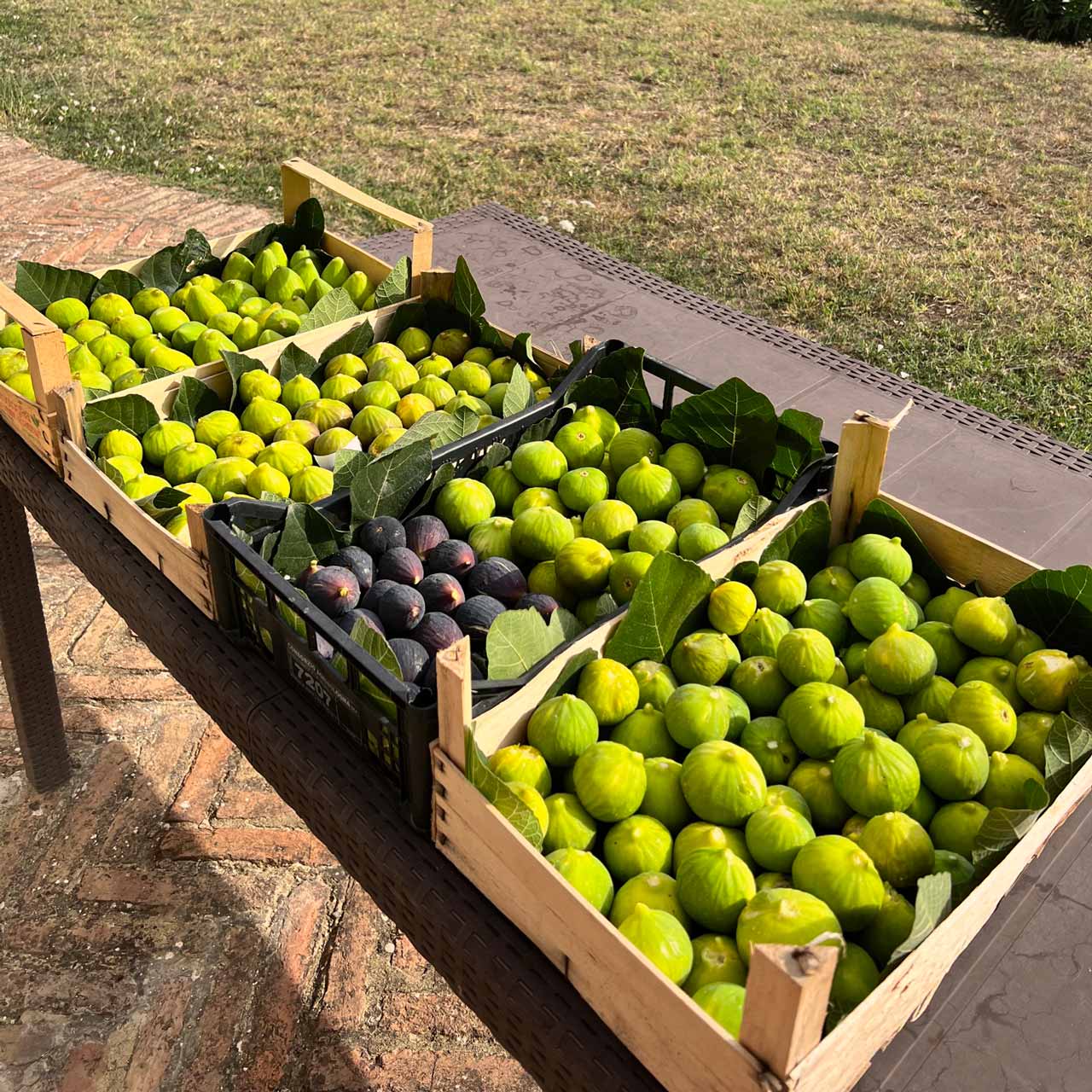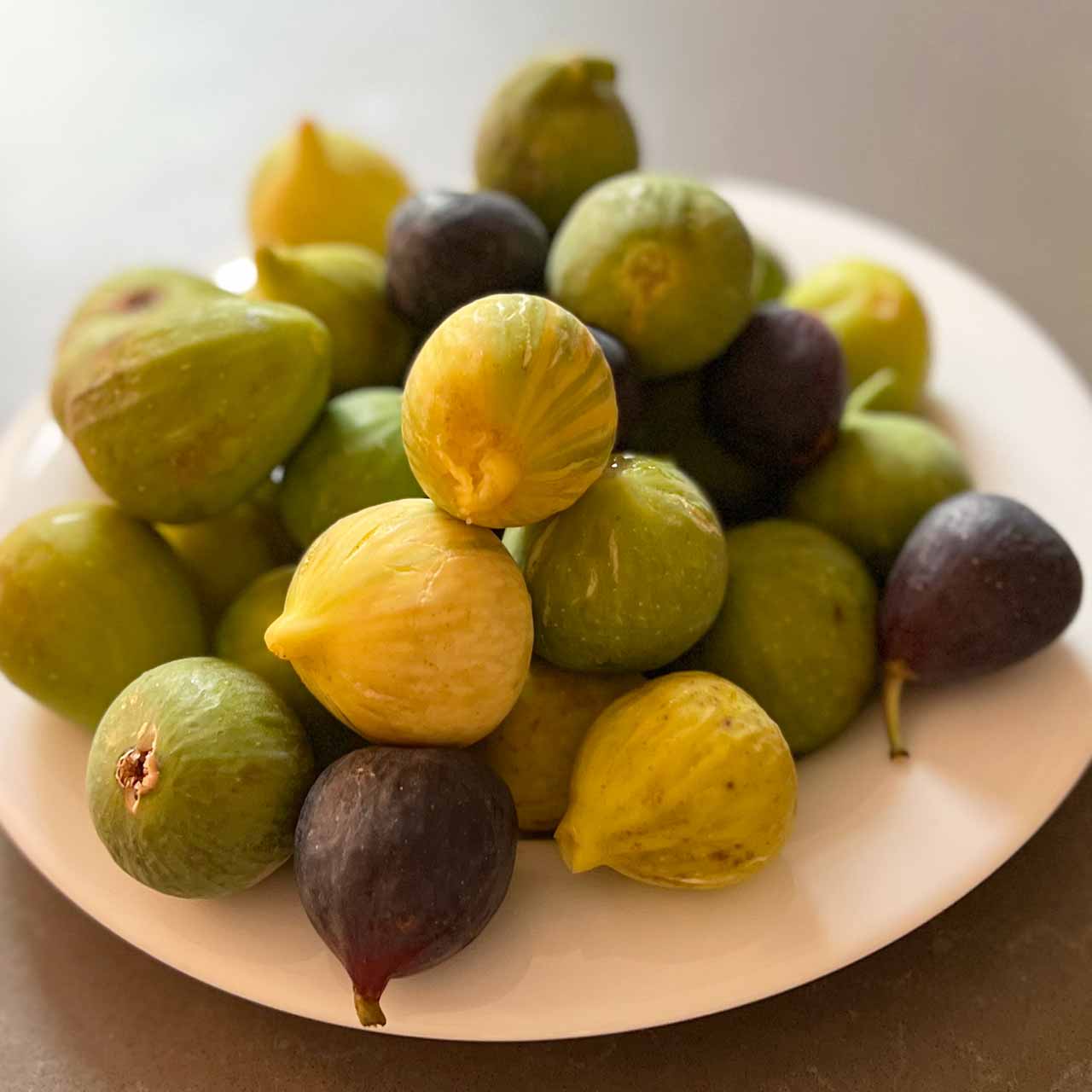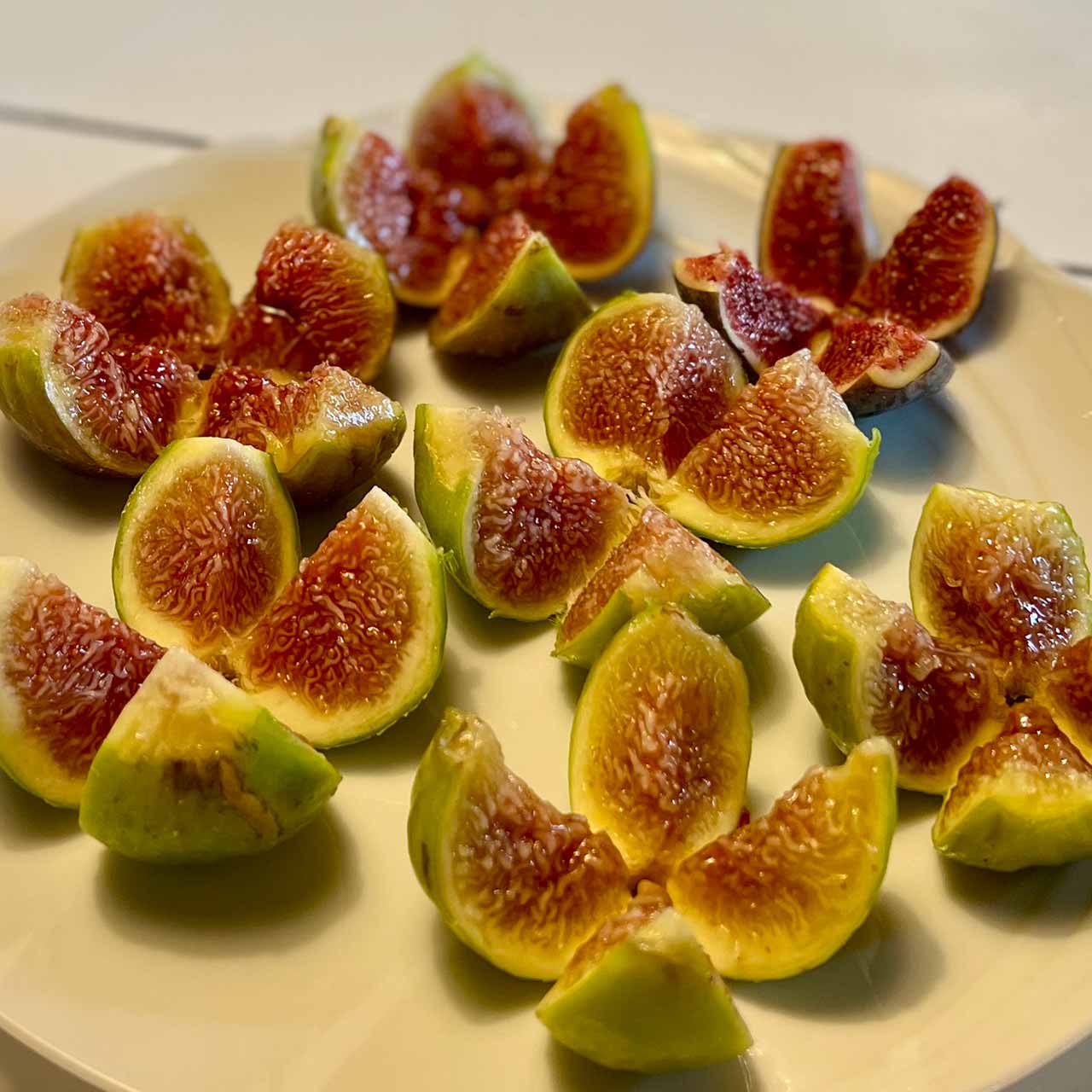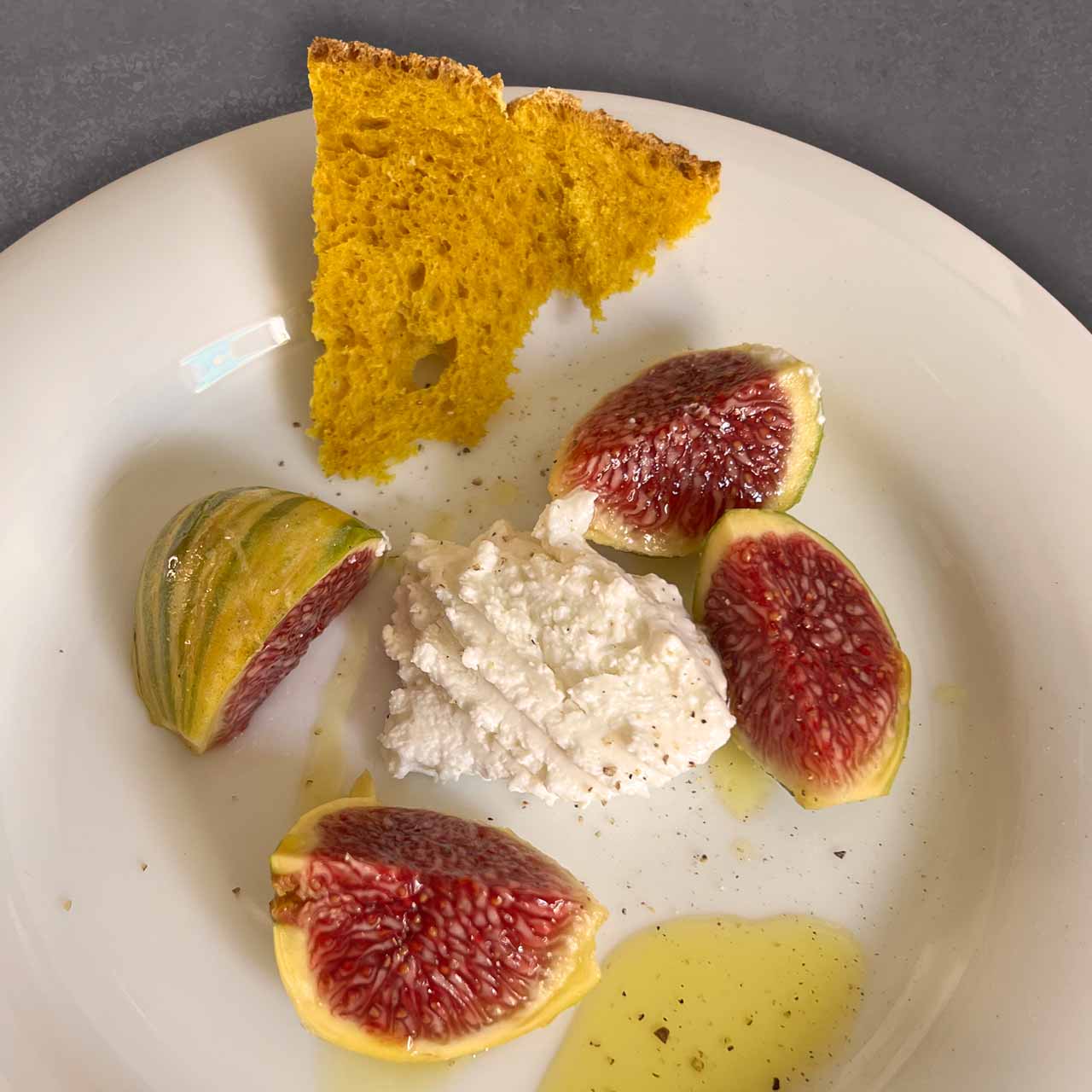La ficaia di Montalcino

Authentic flavors from the heart of Tuscany
La ficaia di Montalcino was born from the desire to recover the "joyful eating" and nourish one's body with healthy fruit, born and grown without any phytosanitary treatment and with the utmost respect for nature.
This is why, four years ago, we decided to dedicate one hectare of our farm to a unique planting in Montalcino: a ficaia of more than 200 plants expressing a rich genetic heritage thanks to the selection of 32 ancient seeds, all with peculiar characteristics.
Just as with wine, tasting our figs, every "joyful eater" will enjoy unique flavors and fragrances, a unique expression of the Brunello di Montalcino land.

Harvesting
The various cultivars have different ripening periods: from June until October.
During the harvesting period, we get up at 5 in the morning and pick them by hand, one by one, with the entire peduncle, without causing damage to the plant and tearing the skin which would expose the fruit to degradation and the rapid loss of its properties beneficial.
Freshly harvested figs are delivered fresh to our restaurants, relais superior and starred chefs, who offer them fragrant, au naturel or after cooking in combination with other ingredients, to create dishes of excellent quality that are appreciated all over the world. And we also offer them with great pleasure to our guest friends! And we also offer them with great pleasure to our guest friends!

A sacred fruit, precious for health
The fig is an ancient plant, with roots in the mythology and culture of the Mediterranean and the Middle East. A fruit sacred to the gods in ancient Greece, Homer wrote about it as early as the 9th century B.C. and other references can be found in ancient Egypt (4th century B.C.), up to the Roman era which left us many writings on varieties and cultivation methods (1st century A.D.).
In fairly recent times, the fig has been relegated to the margins of good eating because it is very high in sugar and wrongly considered unsuitable for a healthy diet. In fact a 100 grams (3 oz) of fresh figs contains only 45 calories, far fewer than those provided by other common fruits such as bananas (90 kcal/100g), tangerines (75 kcal/100g) or apples (50 kcal/100g).
In recent years, the fig has been rediscovered for all its excellent nutritional properties and, precisely because it is difficult to preserve, it is a real privilege to be able to enjoy it freshly picked.

It is rich in vitamins and minerals, especially calcium, which is ideal for people intolerant to milk and for the wellbeing of our bones, especially for women with osteoporosis problems.
Its anti-inflammatory and antioxidant properties can prevent cancer and facilitate blood circulation: a panacea for the prevention of cardiovascular diseases. It is a valuable aid in combating constipation and, thanks to the natural polyphenols it contains, strengthens our immune system and lowers blood pressure.
Fig is an anxiolytic, eases hyperacidity of the stomach, relieves heartburn and reduces colic. It also contains magnesium useful for the wellbeing of the nervous system, our skeleton and fat metabolism.
Figs are also natural antibiotics, thanks to their antibacterial and antifungal properties. They contain vitamin C and vitamin B6, essential for the synthesis of serotonin, better known as the feel-good hormone.
In short…our grandparents knew best!

The selection of these ancient varieties is an integral part of our philosophy of respecting and enhancing the land, reducing environmental impact and protecting health. In fact, ancient fruits are more resistant to disease and go hand in hand with our choice not to resort to any kind of phytosanitary treatment.
Our figs can be enjoyed without bothering to remove the skin, rediscovering gestures that belonged to our grandparents and genuine, intense flavors. Because of their taste-olfactory profile, the different cultivars can be combined with both sweet and savory dishes. These are some of our favorite combinations:
- bread with extra virgin olive oil, salt crystals and red and pink figs;
- bread, ham and yellow or red figs;
- spelt salad with cherry tomatoes, fresh pecorino cheese, oil and blond figs;
- anchovies, butter and orange figs;
- blond figs with Cinta Senese or pigeon;
- figs and walnuts - you name it!